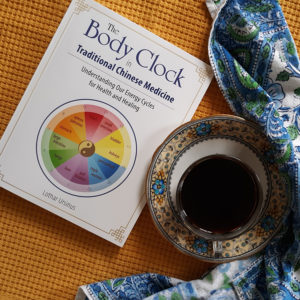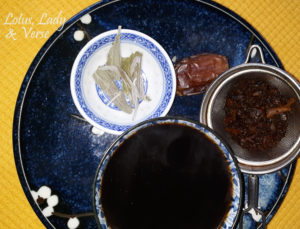The Body Clock in Traditional Chinese Medicine: Understanding Our Energy Cycles for Health and Healing by Lothar Ursinus, 2020. Published by EarthDancer an Inner Traditions Imprint.

Besides having hunger pangs between meals and instinctively knowing what time it is, have you ever checked the time on your body clock?
As humans, we use the 24-hour day to eat, sleep, work, and recreate. We know generally what times we are engaged, but try to cram even more into our already packed schedules. Even though we want to be on top of our game, from time to time we get sick, despite our best efforts.
Rather than exhausting our energies, we could choose to optimize health. An awareness of our connections—the links between our internal organs and the natural times of light and rest in a 24-hour day—can help awaken us.
The Body Clock shows how we’re more vulnerable to falling off track than we think.
Harmonizing Our Organs
Both ancient and modern medicine systems have described the mysterious ways the body copes with challenges. Traditional Chinese Medicine (TCM) is one system that explains our bodily functions as those carried out by pairs of organs. The harmonizing roles of these pairs is one way we can realize balance, the healthy state, or recognize imbalance, the unhealthy state.
Organ Features
You’ll read that according to Ursinus’s views and TCM, every function in our body, whether physical or metaphysical, is known by the company it keeps. Every organ has associations with the endocrine system, sensory organs, body tissues, fluid, and taste. Even our teeth are known to correlate with the organs.
In The Body Clock, the 12 internal organs become 6 pairs of organs. These 6 pairs share certain features that are both physical and super-physical.
Going Beyond the Physical
The 6 pairs not only do their expected jobs, e.g., the stomach takes in and processes food, and the spleen nourishes the blood and fluids, but each also has qualities or characteristics that go beyond the physical. For each pair, author Ursinus discusses a sensory aspect—something you wouldn’t think that internal organs have. After all, can our lungs really “feel” or sense anything?
Liver, Lungs and Heart
Our Liver, Lungs, and Heart pairs of organs are not the only, but three of the certainly emotional organs in our bodies.
We depend on the healthy actions of our liver to filter fluids and our gallbladder to produce bile for intestinal elimination. And yet we often don’t reflect on the fact that the liver/gallbladder is a complex organ system with emotional characteristics that can get out of control.
We cannot live very long if we cannot breathe. As you know, our healthy lungs take in air and breathe out carbon dioxide. The lungs are paired with the large intestine. These two organs are involved in elimination of toxic waste. Emotional characteristics of the Lungs and Large Intestines have to do with grief and melancholy (sadness).
Our heart is paired with our small intestine. The heart is, as Ursinus says, “our sun organ” also “the organ of duality”. With the element of fire being its signature, both the heart and small intestine can overheat. You begin to sense the fragility of our hearts in real time.
Our Hearts express joy and desire, easily our most cherished, and also conflicting, emotional states!
In conclusion
The functions of our hard-working organs are not limited to making decisions about sustenance or analyzing blood or nutrients and parsing the results. For instance, you’ll read how the heart has been found to have more sensing capacity than our brains! (see Ursinus, The Body Clock, or click on this link to read more from The HeartMath Institute in California).
The book is a pleasure to read since it talks to the reader about emotions and bodily processes we have experienced. Lothar Ursinus, a naturopathic doctor and researcher in Hamburg, Germany, conveys the feelings communicated by our organs and indicates that we need to take care of them.
 Studying herbs as I do, I love the relationships of plants and emotions, of the bodily organs, the elements and seasons, sense of taste, and many more associations in The Body Clock.
Studying herbs as I do, I love the relationships of plants and emotions, of the bodily organs, the elements and seasons, sense of taste, and many more associations in The Body Clock.
One of the associations with organs is the affinity with certain herbs that promote or protect their functions. For instance, herbs for the heart/small intestine pair, such as rosemary, improve circulation. Lemon balm and lavender promote calm. And chicory root is an herb that has affinities with the liver and gallbladder, the small intestines, and the spleen-pancreas.
Looking at the compilation of facts and beliefs in the tables given for each organ pair, I agree, and I think you might as well, that organs “are more than they look” (paraphrasing poet Mary Oliver). There’s communication between our internal systems and the universe. Something we’ve ignored until now, but with this book and others it’s possible to catch up.
See the author’s website in English at healthy-active.com or the author page at Inner Traditions.



